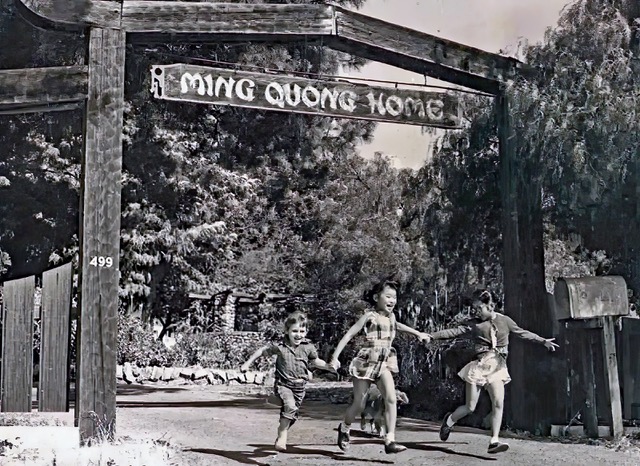
It was a chilly morning in January, 1953 when 11-year-old Elena Lim arrived in Los Gatos. Her widowed father decided that he was unable to care for her so he surrendered her to the missionaries at Ming Quong.
Elena was unkempt, malnourished and had been abused and neglected. After her mother died when she was an infant she was shuffled among a number of Chinese families who were barely able to support themselves and their own children. She felt no love, affection, or support.
All of that changed when she was admitted to Ming Quong (“radiant light”) where she found kindness, guidance, structure, and a sense of belonging. For the first time in her young life she had her own room, clean clothes, three healthy meals a day, proper medical and dental care, and her Ming Quong “sisters.” The experience changed her forever.
Elena’s story is similar to those of over 400 other Chinese, Chinese American and bi-racial girls (and later boys) who entered Ming Quong between 1925 and 1958. According to intake records, some were placed for health reasons or behavioral problems, others came from broken homes, and several were admitted by a parent or guardian who was either unable or unwilling to care for them. Some suffered from abuse and neglect. And some were placed temporarily and later returned to one or both parents or an adult sibling.
The children grew up in a stable and nurturing environment. They did their assigned housekeeping chores, attended public schools, played team sports, read books, and listened to records. Although they attended church and were raised with Christian values, they were also encouraged to maintain their Chinese culture and traditions.
Ming Quong alumni helped raise nearly $24,000 to restore the traditional gate
The Los Gatos campus was the third of three Ming Quong homes which were established by a devout Presbyterian missionary named Donaldina Cameron for what she referred to as “innocent” young Chinese children who needed support. She first earned notoriety in the 1870s by bravely rescuing young women from the Yellow Slave Trade in San Francisco’s Chinatown.
The first Ming Quong residence was built in the Oakland Hills in 1925 on land adjacent to Mills College. The stately home was designed by famed architect Julia Morgan in a Mediterranean style with Chinese motifs including traditional Foo dogs at the entrance. It housed girls of all ages.
When Oakland’s Chinatown began to expand in the mid-1930s, Cameron recognized the opportunity for the older girls to get greater exposure to their Chinese heritage. She split the children into two age groups and used the proceeds from the sale of the first home to create a separate facility for each. Teenage girls were moved to a home near Oakland’s Chinatown and younger ones (pre-k through elementary school) were sent to the former Spreckles estate in Los Gatos.
The Oakland residence closed in 1958 and the Los Gatos home merged with the Eastfield Home of Benevolence, a San Jose orphanage, to become Eastfield Ming Quong. The organization went through several changes in subsequent years, from EMQ to Uplift Family Services, and finally to Pacific Clinics, California’s largest provider of behavioral health and social services.
Given their fondness for their Los Gatos home, several Ming Quong alumni together with the Chinese community and other supporters raised nearly $24,000 to restore the iconic archway at the entrance to the property where they placed a commemorative plaque.
This story is based in part on interviews with Elena Lim Wong Viscovich, Ed.D., an alumna who is dedicated to correcting misinformation about the history of Ming Quong. Additional material was sourced from “Chopstick Childhood” and “Bamboo Women” by alumna Nona Mock Wyman.
Alan Feinberg is a local historian and founder of the LOST Gatos Project lostgatos.com. His mission is to generate enthusiasm among Los Gatos residents for remembering and preserving our town’s unique character and historic treasures before they’re lost forever. For more Los Gatos history, download the free mobile app Discover LOST Gatos and take a self-guided walking tour through our historic downtown.









